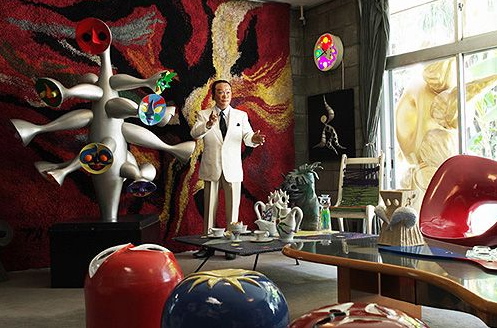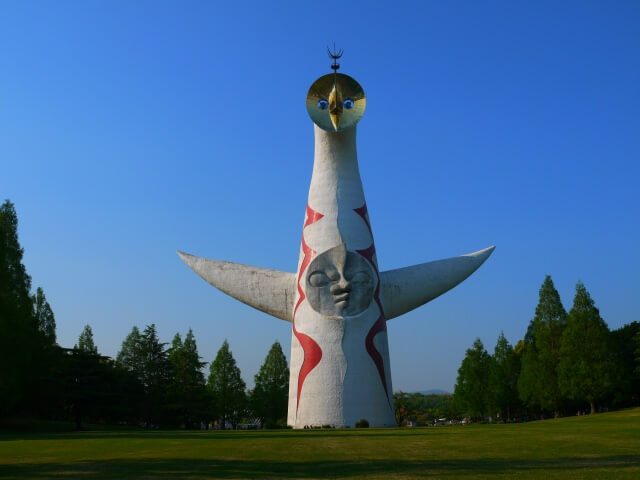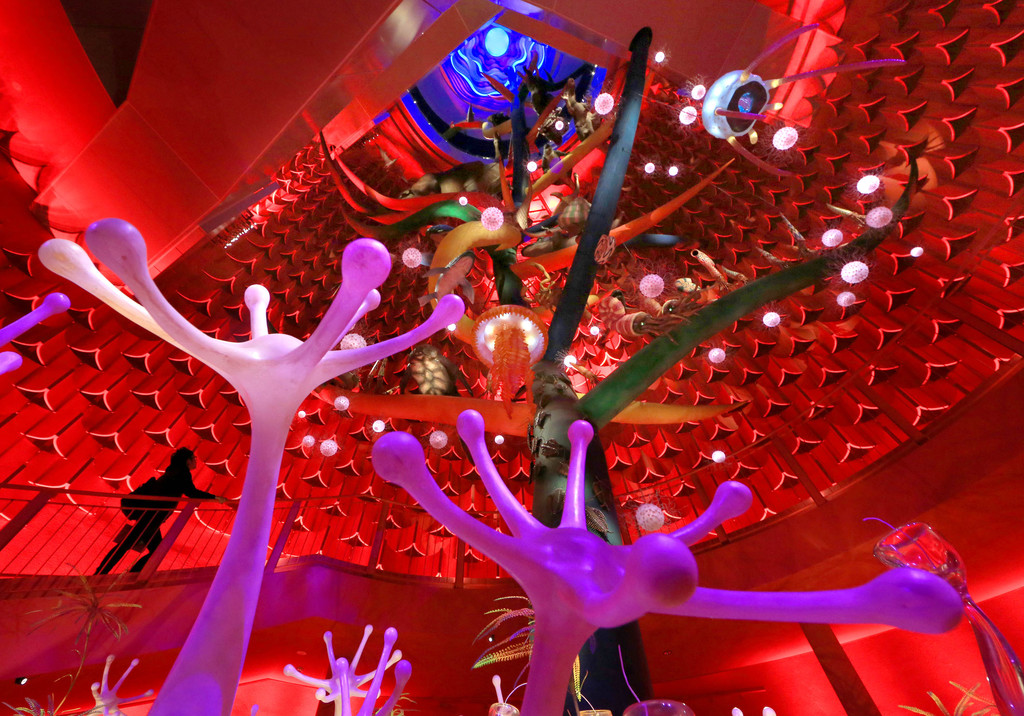Taro Okamoto is known for his paintings, murals, sculptures and art theory. His famous quote “art is an explosion” perfectly sums up his art pieces which are full of expressive colours and far-reaching lines. Taro was inspired by the prehistoric Jomon period in Japan, he brought this culture into the light and gave it recognition to the public. He wanted to create art that is freeing and attracts the eye. Taro was part of the avant-garde movement whose work is opposed to mainstream cultural values. He stood up for individual rights and freedom.
Taro was born on February 26, 1911, in Takatsu Village In Kawasaki, Kanagawa, Japan. He was the son of well known Japanese cartoonist, Ippei Okamoto and Writer Kanoko Okamoto. Ippei was a manga comic artist and was well known for his refined style of writing. He started his artistic journey at the age of 16, learning oil painting from Wada Eisaku. At 19, he started his studies at the Tokyo University of Art in oil painting.

He accompanied his father on a trip to Paris the same year he started school and decided to stay in France. He remained there for the next ten years. While in Paris he became associated with surrealist artists Andre Breton and Kurt Seligmann who also influenced his work.
Most of Taro’s formal education came from his time spent in Paris. From 1932-1938 he attended many different classes at Sorbonne such as Philosophy. He specialized in Aesthetics, learning from the well known Victor Basch.
Taro was the youngest member of the Abstraction-creation group. He was successful and entered all exhibitions. This is Taro’s earliest known saved art piece done in 1936. As a budding artist, he grew an interest in watercolours yet you can still see his abstract twist to it. This piece was done while he was a member of the group Abstraction-Creation.

Andrew Breton recognized this painting and suggested entering it in the Exposition Internationale du Surrealisme.
Okamoto befriended many Parisian Avant-garde artists in France, most notably including Pablo Picasso, Max Ernst, and Man Ray. He was inspired by Picasso’s Pitcher and Bowl of Fruit (1931). In 1932, Okamoto started to successfully submit his pieces to galleries around France.
His first major breakthrough came in 1938 when he was included in the International Surrealist Exhibition in Paris. In 1941 he produced a collection of 4 paintings. A famous painting titled “Wounded Arm” represents human suffering we have the strength to overcome. His collection was recognized and he won the Nika Prize at the Nika Art exhibition.

“Myth of Tomorrow” is a Mural done in Keio Inokashira at the line connection walkway, at Shibuya station in Tokyo 2003 and is 98 feet long. This post-war art piece represents a bomb explosion showing giant mushroom clouds of smoke with his representation of devastating power coming through the smoke. Taro is trying to share a message that even in the harshest, evil conditions the human race can overcome anything.

This painting done in 1950 is a representation of his view on evil heredity in our society. The orange monster represents a bully to the poor society. Although Taro started out painting abstract paintings, he soon grew dissatisfied with the limitations of emotion and started incorporating figures into his artwork.
Taro Okamoto paints this monster which represents the sinister symbolism of oppressive and authoritarian fascism.
Part of the Japanese art movement, “Men Aflame” was painted in 1955. It addresses Japanese sailors being exposed to radiation on board the Dai-go Fukuryu-maru. His artwork was known as “reportage”. It was truly a politically engaged art piece in Japanese culture. Taro created this ceramic mural for Tange’s Yoyogi Tokyo Olympics, It covered 50m by 3m across the entrance of the sports centre. Taro had a lot of involvement with the Olympics by creating Olympic themed art like “Marathon”. He also designed the medal of participation as well as the medals for the Sapporo Winter Olympics and the Munich Olympics.
Coming to the end of his career Taro was commissioned to create many large murals and sculptures. “The Tower of Sun” was made in Osaka for the Expo ‘70 in 1970, where 64 million people attended.

He made this 70-metre tall tower with the gold face representing the future, the facing red face as the present and a black sun painted on the back to represent the past.
During the expo, people were allowed to walk through the tower and view some of Taro’s art collection titled “Tree of life”; it features a psychedelic experience depicting the evolution of human life. It even featured a staircase into one of the arms.
